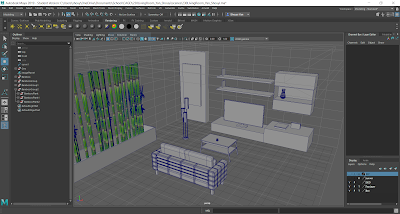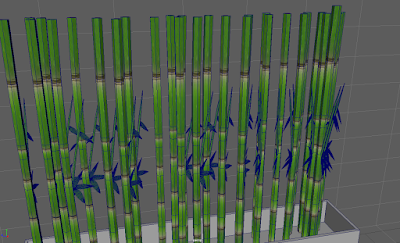CAGD230: Living Room
Week 4 Progress
Progress Report: I still have a couple of UVs left to do such as the wall, floor, and some smaller items. Meanwhile, I have actually started to add lights to my scenes. This way I can actually check how my textures look in the renders. Some textures are using Arnold's aistandardsurface so I had to check whether they look natural in the scene.
There are a couple of issues I'm having with the lights as well or maybe it's also the texturing that needs help. The first one isn't too difficult, it's the lighting in the cabinet I modeled. You can see that the half-circles in the back are the real lights and the orbs in front are, I suspect, the lights reflecting from the glass panel in front of the shelf. I might just need to play with the attributes and the texture of the cabinets itself or remove the glass panel entirely.
The second issue I have is the lighting on the glass cup. I suspect it's the glass texture itself that might be causing the issue. The issue is that it looks strange, the glass texture that it is. And when you rotate it, it looks different. I have been working on this issue but it's difficult to actually fix it. That's because you can't see the glass texture in actual Maya. You have to render it in order to see the texture and rendering takes a long time, even with a low resolution. Plus a low resolution isn't the best for this as it's difficult to actually see the texture as it would look too grainy.
The last issue I need to fix is the TV. It's not too bad, but there's not enough light casting off the TV. The TV looks bright but for it to be realistic, there should be some sort of cone or ray of light coming out of it. However, the mesh light does not do that and I'm not sure how to do that, I might need to look online for a guide.
There are still lights I have to add to this scene, such as ceiling lights and light coming from the window. I did model this scene with daylight in mind. But that would mean, I probably should remove most of the lights from my scene now. Because it's a waste of energy to use lights during the day... Plus it feels too strange to have both sunlight and light from the lamps. But maybe I might just stick to a more night vibe. Who knows. We'll see how this will end by next week as it will be the last. Stuff that's left to do include: finish texturing and working on lights.



















